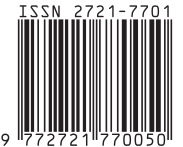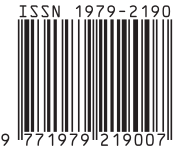Pemanfaatan Mikroorganisme Antagonis untuk Mengendalikan Penyakit Hawar Bakteri (Xanthomonas campestris pv. malvacearum) pada Kapas
Abstract
Bacterial blight of cotton caused by Xanthomonas campestris pv. malvacearum is oneof the important cotton diseases. The pathogen infects all of part of the plant from seedling to fully
develop plant. In South Sulawesi, bacterial blight caused severe damage to the plant resulting yield
lost up to 50 %. Biological control is now a popular control method for plant diseases.This study
aimed to explore bacterial antagonists of bacterial blight. Exploration was conducted in Asembagus,
Singosari and Karangploso. Bacteria were isolated from soil and cotton plant parts (root, sleaf, and
stem). Six of 140 isolates were able to inhibit the growth of X. campestris pv. malvacearum in vitro.
However, only 2 isolates (Asb-D-3 and Asb-D-5) have capability of reducing the disease severity on
48,48% and 45,64% respectively.
Published
2008-03-04
How to Cite
YULIANTI, Titiek; HIDAYAH, Nurul.
Pemanfaatan Mikroorganisme Antagonis untuk Mengendalikan Penyakit Hawar Bakteri (Xanthomonas campestris pv. malvacearum) pada Kapas.
Jurnal Pengendalian Hayati, [S.l.], v. 1, n. 1, p. 22-25, mar. 2008.
ISSN 2721-7701.
Available at: <https://jurnal.unej.ac.id/index.php/JPH/article/view/7>. Date accessed: 05 feb. 2025.
Issue
Section
Artikel
Authors who publish with this journal agree to the following terms:
- Authors retain copyright and grant the journal right of first publication with the work simultaneously licensed under a Creative Commons Attribution License that allows others to share the work with an acknowledgement of the work's authorship and initial publication in this journal.
- Authors are able to enter into separate, additional contractual arrangements for the non-exclusive distribution of the journal's published version of the work (e.g., post it to an institutional repository or publish it in a book), with an acknowledgement of its initial publication in this journal.
- Authors are permitted and encouraged to post their work online (e.g., in institutional repositories or on their website) prior to and during the submission process, as it can lead to productive exchanges, as well as earlier and greater citation of published work.







